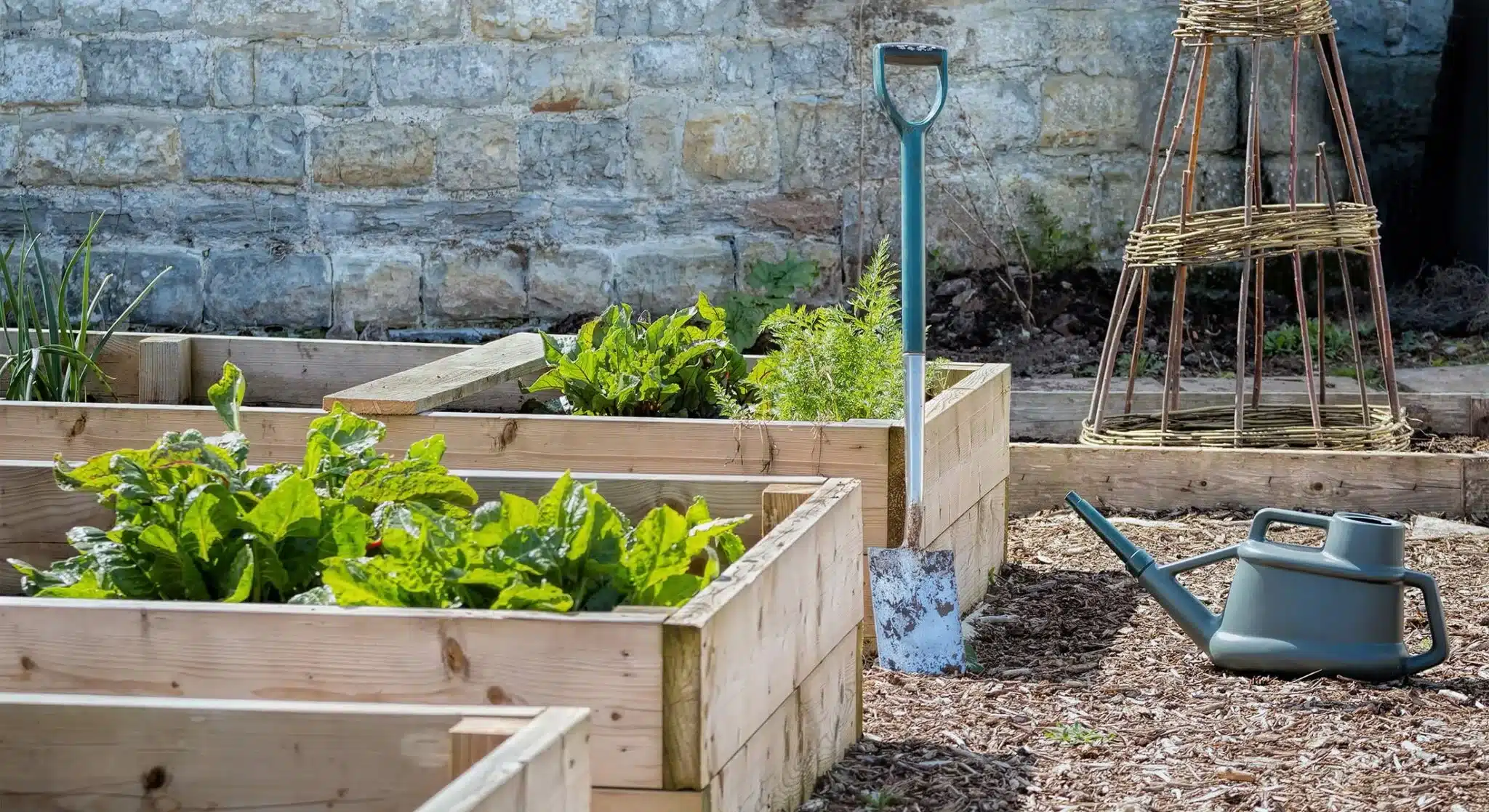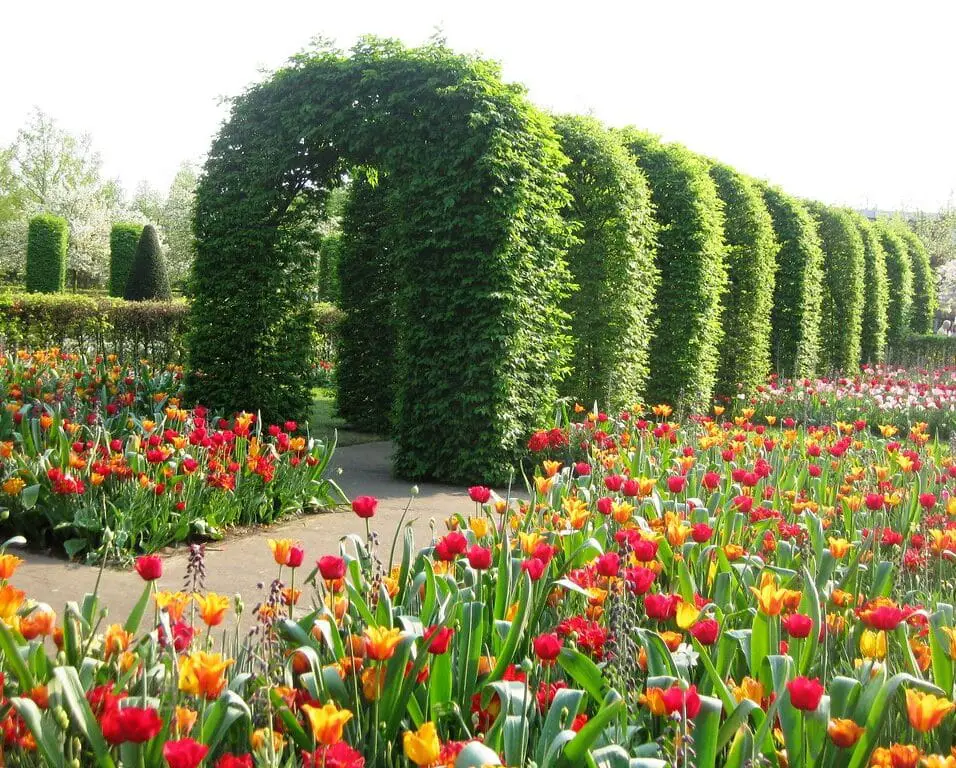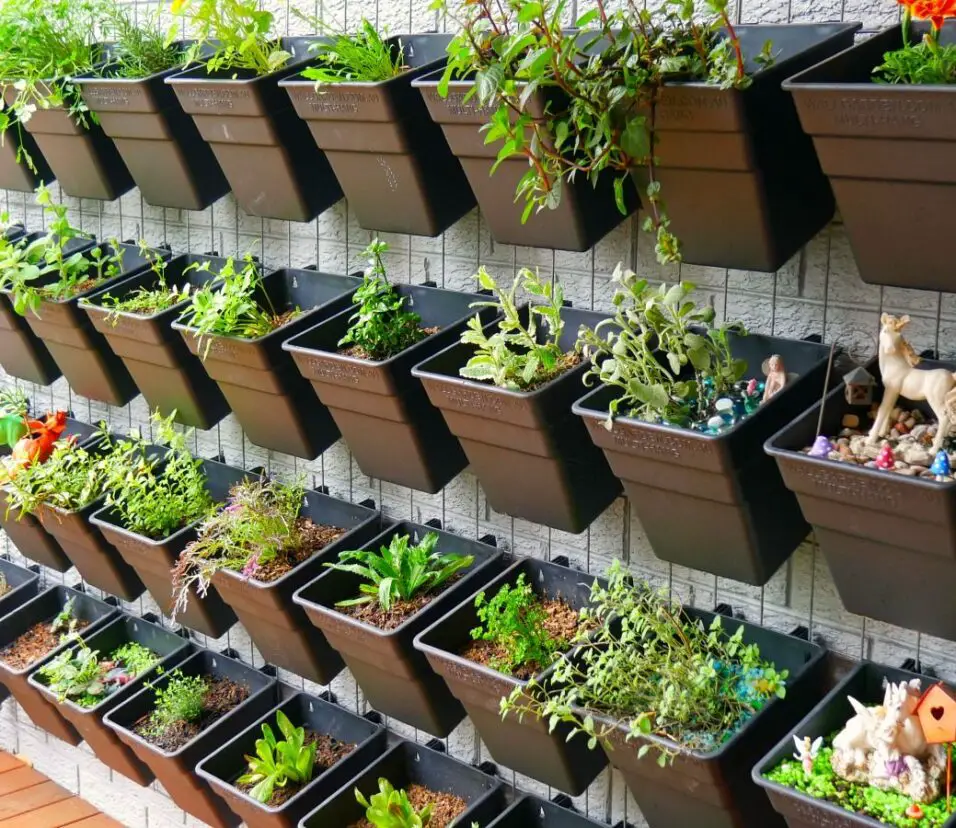Is Pressure Treated Wood Safe For Gardening
Introduction
Pressure-treated wood is commonly utilized for outdoor construction due to its durability and pest resistance. But gardening raises an essential question: can pressure-treated wood be used for garden structures like pots and beds? The practice of chemically treating wood to make it more resilient against the elements prompted this inquiry.
It is explained why it is not a good idea to use pressure-treated wood in a garden. The pressure treatment technique involves impregnating the wood with preservatives such as copper, arsenic, chromium, and others. These chemicals are quite effective in preventing wood rot, but they may seep into the soil and be taken up by plants.
Provides a complete summary of pressure-treated wood’s benefits and hazards in garden hose applications. We will examine scientific studies and expert perspectives to illuminate pressure-treated wood kinds, preservative makeup, and soil and plant health effects. Gardeners can analyze the pros and cons of pressure treated wood by balancing longevity and chemical leaching. Understanding the effects of pressure-treated wood in gardening is crucial for plant health and ecosystem health as environmental awareness rises.
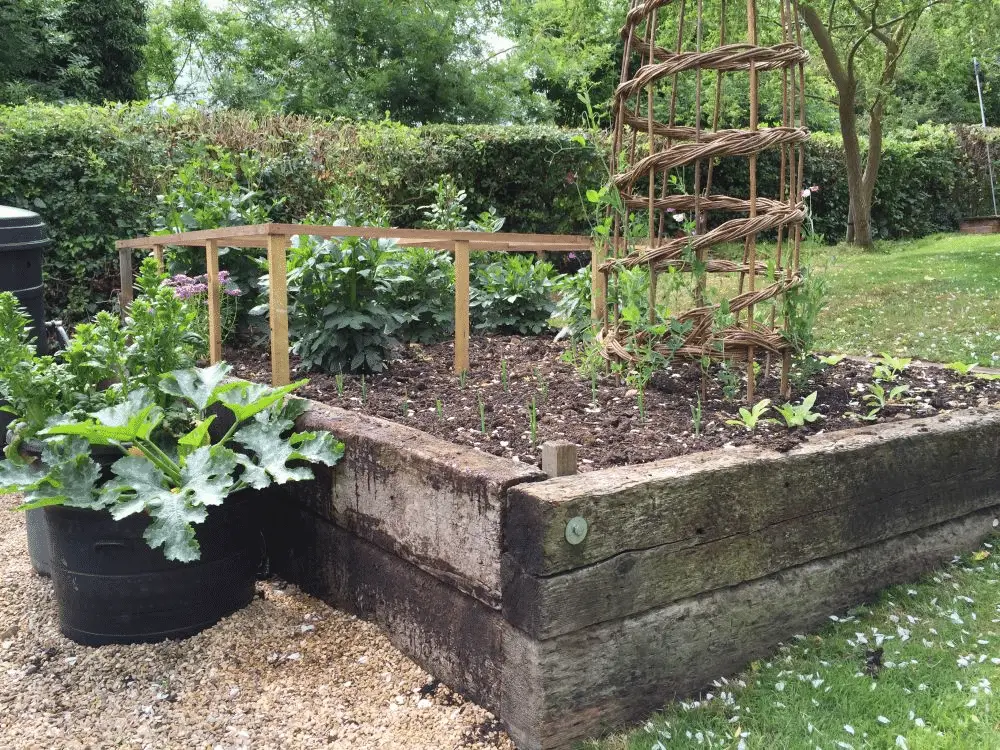
Can you use pressure treated wood around a garden?
The new pressure-treated woods are safe, but Wolmanized Outdoor advises against using them in food since the preservatives may leach into it. It suggests an impenetrable liner between wood and dirt.
Even though it has its downsides, many gardeners utilize pressure-treated wood.Preservatives in pressure-treated wood enhance its longevity, making it ideal for raised beds, fences, and borders. Preservatives used to contain harmful substances like arsenic, which might leak into the soil and harm plants and people.
Choose contemporary, less hazardous formulas like ACQ or CA to reduce these risks. Gardeners can use these safely. To avoid direct contact, use a plastic barrier between wood and dirt. Raised beds made of pressure-treated wood and lined with plastic can also minimize soil contact.
Is it safe to use old pressure treated wood for garden beds?
There is a lot of confidence in the safety of using these treated woods for anything, even vegetable beds. Sealing the wood with an oil stain or sealer is an excellent idea to prevent any kind of dirt contamination. The use of pressure-treated wood is optional while creating raised bed gardening.
Due to the risk of arsenic exposure, old pressure-treated wood garden beds should be avoided.
Newer, safer compounds like ACQ or CA are available, but old wood’s chemical composition and usage history determine its safety. Avoid putting old pressure-treated wood in garden beds with soil for safety. Choose untreated wood, rot-resistant cedar or redwood, or recent environmentally friendly treated woods developed for gardening.
Is pressure treated wood safe for ground?
However, there are several caveats to keeping pressure-treated wood in constant touch with the soil. Past pressure-treated wood included dangerous chemicals like arsenic that might leach into the soil and harm plants and humans. Modern formulations like alkaline copper quaternary (ACQ) and copper azole address these concerns and are safer.
Important when utilizing pressure-treated wood in direct ground contact:
Select a Formulation: Choose pressure-treated wood with ACQ or copper azole for lesser toxicity and leaching.
Use a Barrier: Place a plastic or geotextile barrier between the wood and soil to reduce leaching. Stopping direct contact lowers chemical leaking into the ground.
Avoid Edible Plants: Pressure-treated wood in edible plant garden beds may leach chemicals. Even while contemporary therapies reduce danger, it’s best to be cautious.
Regular Maintenance: Seal or paint the wood to avoid chemical leakage into the soil.
Overall, modern pressure-treated wood
What are the disadvantages of pressure treated wood?
Pressure-treated wood offers durability and resistance to decay, but it also comes with several disadvantages that need consideration.
- Chemical Exposure: Historically, pressure-treated wood contained toxic chemicals like arsenic in the form of chromated copper arsenate (CCA). Even though newer treatments like ACQ and copper azole are less toxic, they still contain copper and other chemicals that could leach into the soil over time, potentially affecting plants and the environment.
- Health Risks: Working with pressure-treated wood poses health risks. Sawing, sanding, or cutting treated wood generates fine dust that, if inhaled, can cause respiratory irritation and potentially expose individuals to the chemicals within the wood.
- Limited Aesthetic Appeal: Pressure-treated wood can have a greenish tint due to the treatment process, which might not fit the aesthetic preferences of some gardeners. This color can fade over time, but the wood might not achieve the natural look of untreated lumber.
- Corrosion: The chemicals in pressure-treated wood can accelerate the corrosion of metal fasteners and connectors. This can lead to structural instability over time if not addressed with appropriate hardware.
- Maintenance: Pressure-treated wood requires regular maintenance, including sealing or painting, to minimize chemical leaching and maintain its appearance. Without proper maintenance, the wood’s longevity can be compromised.
- Limited Use for Edibles: Using pressure-treated wood for garden beds intended for edible plants is still debated due to concerns about chemical leaching into the soil and potentially affecting the plants that will be consumed.
To mitigate these disadvantages, using barrier materials to prevent direct wood-soil contact, employing protective gear when working with the wood, and opting for newer, safer treatment options are advisable. Ultimately, while pressure-treated wood offers benefits in certain applications, understanding and managing its drawbacks is crucial for responsible and informed use.
What is pressure-treated wood, and why is it commonly used in gardening projects?
In a sealed chamber, preservation chemicals are injected into wood fibers under tremendous pressure. Preservatives protect wood from rotting, insects, and other environmental variables, extending its lifespan, especially outdoors.
Pressure-treated wood is popular in gardening due to its benefits. Its increased decay and pest resistance makes it suitable for garden beds, fences, decks, and pergolas exposed to damp and soil. This durability saves time and money on replacements.
Pressure-treated wood is cheaper than cedar or composite lumber, making it suitable for larger projects. Its versatility in size and shape provides for flexible design and construction for different gardening demands.
Contemporary pressure-treated wood treatments like alkaline copper quaternary (ACQ) and copper azole are environmentally and health-friendly. Pressure-treated wood can be used to make durable structures in gardening projects with barrier materials and protective clothes.
What are the potential risks associated with using pressure-treated wood in garden settings?
Using pressure-treated wood in garden settings can present potential risks that need to be carefully considered:
- Chemical Leaching: The preservatives used in pressure-treated wood, even in newer formulations like ACQ or copper azole, can leach into the surrounding soil over time. This leaching can introduce chemicals like copper, which might affect soil pH and nutrient levels, potentially impacting plant growth and microbial activity.
- Plant Health: Certain plants can be sensitive to the chemicals found in pressure-treated wood. Edible plants, in particular, might absorb these chemicals, leading to potential health concerns if consumed.
- Environmental Impact: Chemical leaching from pressure-treated wood can find its way into the local environment, affecting nearby water bodies and wildlife. While modern treatments are less toxic than older formulations, the cumulative effect can still be a concern.
- Human Exposure: Handling or working with pressure-treated wood, especially during cutting or sanding, can release sawdust or particles containing the preservatives into the air. Inhaling or coming into contact with these particles can pose health risks.
- Aesthetic Considerations: The greenish tint of pressure-treated wood due to the treatment process might not align with the desired aesthetics of garden designs.
- Fastener Corrosion: The chemicals in pressure-treated wood can accelerate the corrosion of metal fasteners, compromising the structural integrity of garden structures over time.
To mitigate these risks, it’s important to take precautions such as using a barrier between the wood and soil, wearing protective gear when working with the wood, and considering alternative materials for edible garden beds. Understanding the specific treatment used and its potential impact, as well as regularly sealing or painting the wood, can help minimize risks and promote responsible use in garden projects.
How have pressure-treated wood formulations evolved to address safety concerns for gardening?
Pressure-treated wood formulations have evolved significantly to address safety concerns for gardening, particularly related to the chemicals used in the treatment process. Early formulations, such as chromated copper arsenate (CCA), contained toxic arsenic compounds that raised serious health and environmental concerns.
- Safer Preservatives: Modern pressure-treated wood formulations, like alkaline copper quaternary (ACQ) and copper azole, have replaced arsenic-based compounds. These formulations utilize copper and other less toxic chemicals that are less likely to leach into the soil and have lower human and environmental risks.
- ole treatments has been developed to lessen the amount of chemical that is washed away into the ground.
- Environmental Standards: Regulatory agencies have established stricter guidelines and regulations for pressure-treated wood treatments. These standards ensure that the chemicals used are safer and more environmentally friendly, helping to mitigate the negative impacts associated with older formulations.
- Labeling and Information: Pressure-treated wood products now include clear labeling that indicates the type of treatment used. This allows consumers to make informed choices based on their specific gardening needs and concerns.
These advancements have significantly improved the safety profile of pressure-treated wood for gardening. While some risks still exist, they are far less pronounced than in the past. By selecting modern formulations, using appropriate barriers, practicing proper maintenance, and following recommended safety guidelines, gardeners can harness the benefits of pressure-treated wood while minimizing potential risks to plants, people, and the environment.
Are there specific types of pressure-treated wood that are considered safer for gardening purposes?
Yes, some pressure-treated wood is safe for gardening. Treating wood with fewer hazardous chemicals makes it better for gardens. ACQ and CA are popular alternatives to previous, more toxic therapies.
ACQ-treated wood resists deterioration and insects with copper and quaternary compounds. Copper is another main preservative in CA-treated wood. ACQ and CA treatments are less harmful than arsenic-containing CCA.
Look for ACQ or CA labels or standards on pressure-treated wood for gardening, as they are safer for direct soil and plant contact. A plastic liner or barrier should be used to keep plants from coming into direct contact with soil.
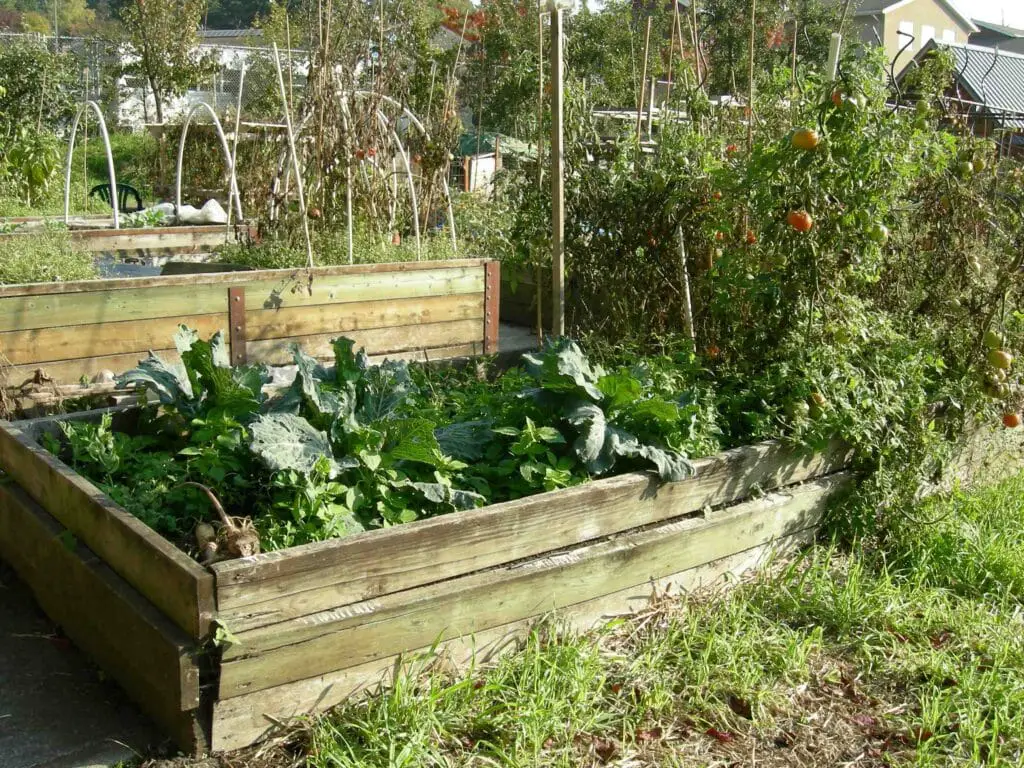
Conclusion
The benefits and hazards of pressure-treated wood for gardening determine its safety. Pressure-treated wood is popular for outdoor applications because it resists deterioration and insects, extending its lifespan and reducing replacements. Some people worry that the treatment chemicals, particularly older arsenic-containing formulations, can be harmful.
Newer treatments such alkaline copper quaternary (ACQ) and copper azole are less toxic and leach less into the soil, easing these concerns. When using pressure-treated wood for gardening, it’s important to make informed choices and take care.
Plastic layer between the wood safe and soil reduces direct contact and chemical leaching. This is especially wise for edible garden areas. Staying knowledgeable about the wood’s treatment and choosing modern, less hazardous solutions is also responsible.
While pressure-treated wood is an option for fencing and other aesthetic features, others may feel more at ease with the use of untreated wood, cedar, or composite timber. Sealing or painting wood as part of regular maintenance helps reduce chemical leaching.
Finally, using pressure-treated wood for gardening projects requires careful consideration of the application, awareness of the treatment chemicals, and proper protections. Gardeners may maximize pressure-treated wood’s durability while limiting its negative impacts on plants, soil, and health by doing so.



